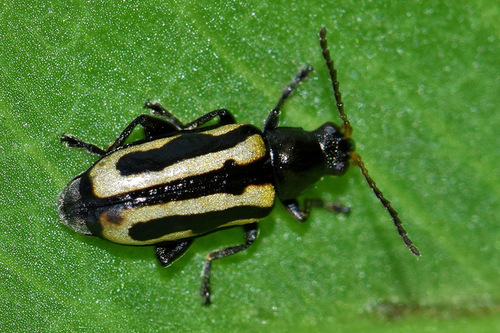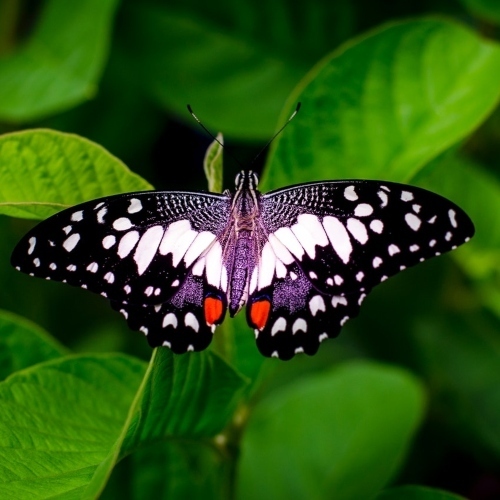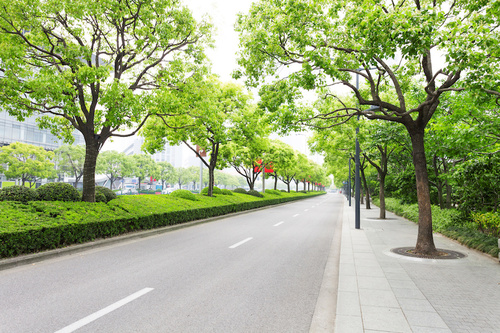Urban Tree Canopy: A Lifeline for City-Dwelling Insects
Introduction
In the heart of our bustling cities, amidst the concrete and steel, there’s a hidden world teeming with life. It’s right above our heads, in the lush canopies of urban trees. These leafy havens are more than just pleasant scenery—they’re crucial ecosystems supporting a diverse array of insects. But why exactly are urban tree canopies so important for our six-legged neighbors? Let’s dive into this fascinating topic and explore the intricate relationship between city trees and insects.
The Urban Jungle: More Than Meets the Eye

Buena Vista Park, San Francisco
When we think of cities, we often picture skyscrapers and busy streets. However, there’s a whole ecosystem thriving in our urban environments, often overlooked but vitally important.
What Exactly is an Urban Tree Canopy?
Before we delve deeper, let’s clarify what we mean by “urban tree canopy.” It’s not just a fancy term for “lots of trees in a city.” An urban tree canopy refers to the layer of leaves, branches, and stems of trees that cover the ground when viewed from above. This green umbrella plays a vital role in our urban ecosystems.
Components of a Healthy Urban Canopy
Key components of a healthy urban tree canopy include:
- Diversity of tree species
- Varying ages and structures of trees
- Adequate canopy coverage across the city
- Connectivity between green spaces
Urban vs Rural: A Tale of Two Canopies
Urban tree canopies differ from their rural counterparts in several ways:
- They often face more stress from pollution and heat.
- They’re frequently fragmented by buildings and roads.
- They require more active management and care.
Despite these challenges, a well-maintained urban canopy can provide numerous benefits not just for insects but for the entire urban ecosystem. Now that we understand what an urban tree canopy is, let’s explore the incredible diversity of the insects that call these green spaces home.
The Incredible Diversity of Urban Insects

A Small Striped Beetle on a Leaf – Photo by Brett Hondow on Pixabay
A Surprising Array of Six-Legged City Dwellers
You might be surprised to learn just how many insects call our cities home. From the tiniest mites to colorful butterflies, urban areas can support a wide variety of insect life. In fact, some studies have found that certain insect groups are just as diverse in cities as in nearby rural areas—as long as there’s sufficient green space.
Who’s Who in the Urban Insect World
Common insect groups found in urban areas include:
- Bees and wasps
- Butterflies and moths
- Beetles
- Flies
- Ants
- True bugs
Adapting to City Life: Insect Style
These city-dwelling insects have developed some fascinating adaptations to urban life. Some have become more tolerant of heat and pollution, while others have adjusted their behaviors to cope with artificial light and noise.
For example, did you know that some urban moths have evolved darker wings to blend in better with polluted surfaces? Or that certain bee species in cities have learned to build nests using plastic waste? Nature always finds a way!
From Concrete to Canopy: How Trees Support Urban Insects

A Butterfly Rests on a Leafy Branch – Photo by Zett_Foto
Now that we’ve met our urban insect neighbors, let’s explore how city trees support their diverse lifestyles.
How Tree Canopies Support Insect Life
Trees are like insect apartment complexes, providing everything from food to shelter. Let’s break down the various ways trees support insect life in cities.
Nature’s Buffet: Trees as Food Sources
Trees offer a veritable buffet for insects:
- Leaves: Many insects, like caterpillars, munch on leaves.
- Sap: Aphids and other sap-sucking insects tap directly into the tree’s “juice.”
- Flowers: Bees, butterflies, and other pollinators feast on nectar and pollen.
- Fruit and Seeds: These provide nutrition for various insect species.
Safe Haven: Shelter and Protection
Tree canopies aren’t just food sources—they’re also safe havens:
- Branches and leaves provide hiding spots from predators.
- The canopy offers protection from harsh weather conditions.
- Bark crevices and hollow areas serve as nesting sites .
Tree Weather: Microclimate Regulation
Trees create their own little weather systems:
- Canopies moderate temperature extremes.
- They increase humidity, which many insects prefer.
- They reduce wind speed, making it easier for insects to fly and forage.
The Circle of Life: Insects’ Role in Urban Ecosystems
The relationship between insects and urban trees isn’t a one-way street. These tiny creatures play crucial roles in maintaining healthy urban ecosystems .
The Ecological Web: Insects, Trees, and Urban Ecosystems

A Bee Collects Pollen from a Cluster of Flowers – Image by Letiha on Pixabay
Insects are key players in the complex web of urban ecology. Let’s explore some of their most important roles.
Busy Bees: Pollination Services
Many of our urban trees and plants rely on insects for pollination. Bees, butterflies, and even some beetles and flies help trees reproduce by transferring pollen as they move from flower to flower. Without these insect pollinators, many of our urban trees would struggle to produce seeds and fruit.
Nature’s Pest Control Squad
Not all insects are pests—many are actually nature’s pest controllers ! Ladybugs, lacewings, and predatory wasps help keep plant-eating insect populations in check. This natural pest control can reduce the need for chemical pesticides in urban green spaces.
The Cleanup Crew: Nutrient Cycling
Insects play a vital role in breaking down dead plant material. Termites, beetles, and various fly larvae help decompose fallen leaves and dead wood, returning nutrients to the soil. This process is crucial for maintaining soil health and supporting new plant growth.
Dining Out: Food for Other Wildlife
Insects are an important food source for many birds, bats, and small mammals in urban areas. A healthy insect population supports a diverse urban wildlife community, creating a more balanced ecosystem in our cities.
Threats to the Urban Canopy: Challenges and Solutions
Despite their importance, urban tree canopies and their insect residents face numerous challenges. But there’s hope—cities around the world are taking action to protect and expand their urban forests.
Challenges Facing Urban Tree Canopies and Their Insect Inhabitants

A View of San Francisco from Atop a Hill
Urban Growth vs. Green Space
As cities grow, trees are often removed to make way for buildings and roads. This habitat loss can have devastating effects on insect populations, reducing both their numbers and diversity.
Weather Changes: A Growing Threat
Changing temperatures and precipitation patterns can stress trees and alter the timing of important events like leaf emergence and flowering. This can disrupt the delicate balance between trees and the insects that depend on them.
The Pollution Problem
Urban air pollution can damage tree leaves and affect insect health. Some pollutants can accumulate in leaves, potentially harming the insects that feed on them.
Unwelcome Guests: Invasive Species
Nonnative insects and plants can outcompete native species, disrupting established ecosystems. For example, the emerald ash borer has decimated ash tree populations in many North American cities, affecting the numerous insect species that relied on those trees.
Hope for the Future: Conservation and Urban Planning
The good news is that many cities are recognizing the importance of urban tree canopies and taking steps to protect and expand them. Here are some initiatives that are making a difference.
Conservation Efforts and Urban Planning for Insect-Friendly Cities

An Adult Helps a Child Plant a Tree
Greening Our Cities: Tree-Planting Programs
Cities worldwide are implementing ambitious tree-planting programs. For example, New York City’s “Million Trees NYC” initiative successfully planted one million trees across the five boroughs, significantly increasing urban canopy cover.
Connecting the Dots: Green Corridors
Urban planners are designing green corridors to connect fragmented habitats. These wildlife highways allow insects and other animals to move more freely through urban areas, promoting genetic diversity and resilience.
People Power: Community Engagement
Many cities are involving residents in urban forestry efforts. Community tree-planting events and citizen science projects help raise awareness about the importance of urban trees and insects, fostering a sense of stewardship among city dwellers.
Policy for Pollinators: Insect-Friendly Initiatives
Some cities are adopting policies to support insect populations . These might include reducing pesticide use in public spaces, leaving areas of parks “wild” for native plants and insects, or requiring new developments to include green spaces.
Be the Change: How You Can Help
You don’t need to be an urban planner or an entomologist to make a difference. Here are some ways you can support urban tree canopies and insects:
- Plant native trees and plants in your yard or community garden.
- Avoid using pesticides in your garden.
- Leave some areas of your yard “messy”—leaf litter and dead wood are important habitats for many insects.
- Support local tree-planting and conservation initiatives.
- Learn about the insects in your area and share your knowledge with others.
Conclusion: A Greener, Buzzier Future

A City Street Lined with Large, Healthy Trees
Urban tree canopies are far more than just greenery—they’re lifelines for countless insects calling our cities home. These leafy oases provide food, shelter, and vital ecosystem services that benefit not just insects but the entire urban environment.
By protecting and expanding our urban forests, we’re not only creating more beautiful cities but also ensuring a diverse and thriving insect population right in our backyards. So next time you’re enjoying the shade of a city tree, take a moment to appreciate the bustling insect world above you. After all, a healthy urban ecosystem starts with the buzz of life in our tree canopies!
Remember, every tree planted, every garden cultivated, and every green space preserved is a step toward more insect-friendly cities. And in supporting our tiny neighbors, we’re creating more resilient, livable urban spaces for all city dwellers— human and insect alike . Together, we can build cities that buzz with life, where concrete jungles and leafy canopies coexist in harmony.
Whether you’re a homeowner or community member interested in supporting local green initiatives, consider contacting us at Arborist Now so you can make informed decisions about tree care that will benefit both your property and the urban environment.


